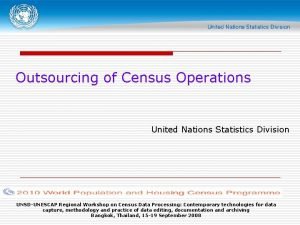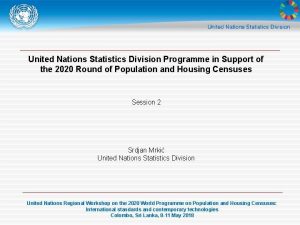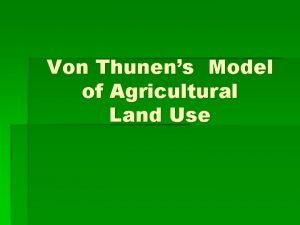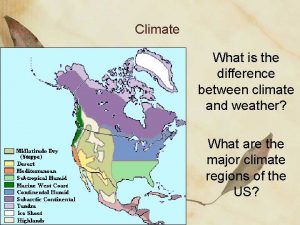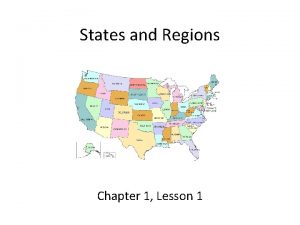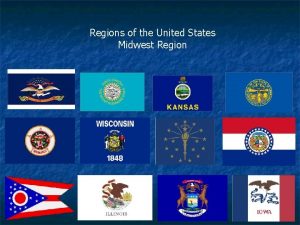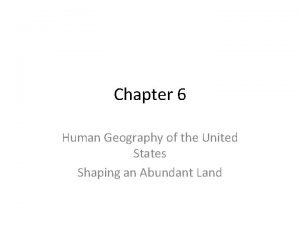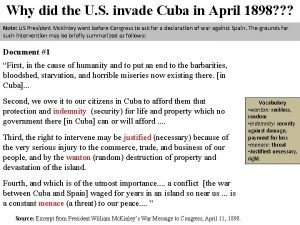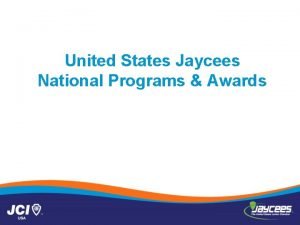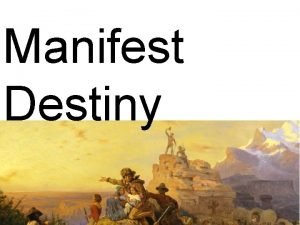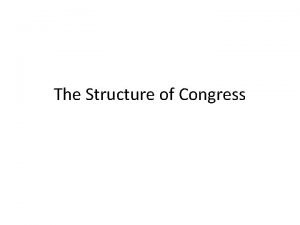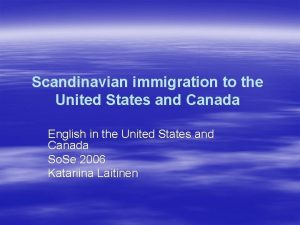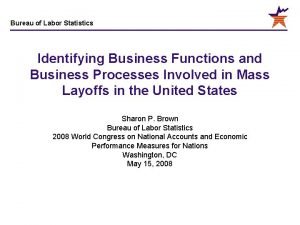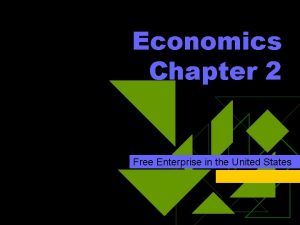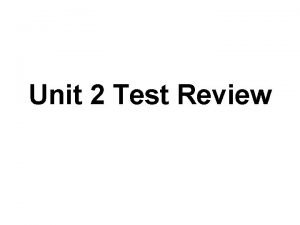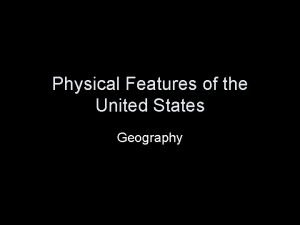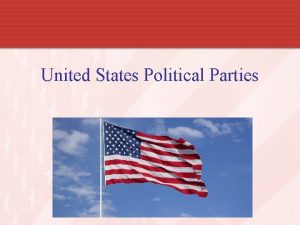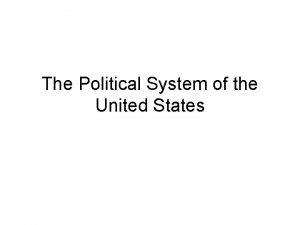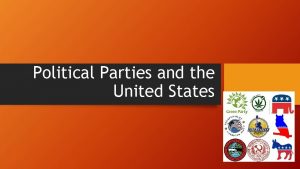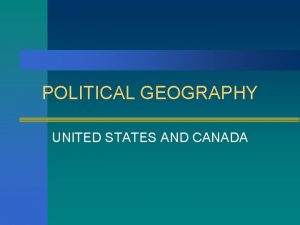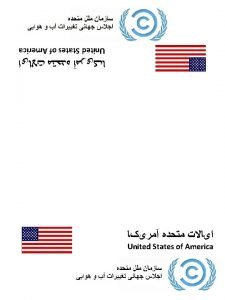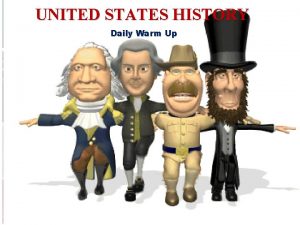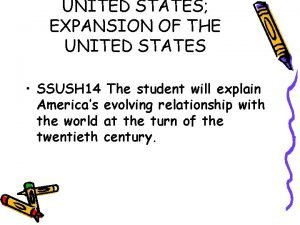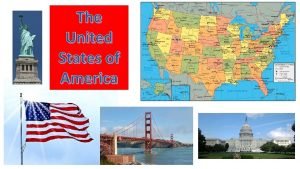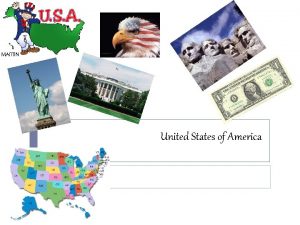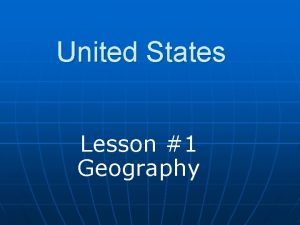The United States Political Division States 50 States
























- Slides: 24


The United States Political Division

States • • • 50 States Largest: Alaska Smallest: Rhode Island Most populous: California No official language, but English only 78. 2% and 13. 4 % Spanish Demography • Population Just under 330 million • White 72. 4% • Black 12. 6% • Asian 4. 8% • Native Americans 0. 9 % • Largest minorities Hispanic African Americans

REGIONAL DIVISIONS West • South-west, mountain states, Pacific coast • Mining is important • Federal gov. owns a lot of land • Strong Latino influence in the south Mid-West • Manufacturing and farming both important (“American heartland”) North-East • New England & Mid. Atlantic • Arguably the nation’s economic and cultural center • Many densely populated postindustrial cities South • Once the land of cotton and tobacco slave plantations • Today, agriculture is still important, but so are new technologies

USA- a representative democracy Separation of Powers provided by the Constitution • Legislative: making laws • • Executive: carrying out laws • • Judicial: interpreting laws • • Organizational Structure Congress, the Senate (100 members) The House of Representative (435) President Vice President Cabinet Supreme Court Other Federal Courts

A TWO PARTY SYSTEM Democratic Party: • The donkey, politically “left” or “liberal” • Believes in: • Better healthcare provision • Raising the minimum wage • Higher taxes, especially for the rich Republican Party: • The elephant, politically “right” or “conservative” • Believes that the government should not interfere with daily life too much • Lower taxes, especially for the rich

PRESIDENTIAL ELECTION • Election finance & election campaigns • Preliminary elections • the General Election (majority votes) & electoral college (270 votes) • Televised debates for presidential candidates • Gerrymandering • Democrats: Bernie Sanders, Joe Biden, Elizabeth Warren, Michael Bloomberg (already withdrawn) • Republicans: Donald Trump • Policies and promises by candidates

Gerrymandering

Electoral College-Political Divisions

I Trumponomics: Summary II Tax and Trade III Regulatory Relief IV Infrastructure Renewal


Politicians blamed the US economic plunge at least in part on demographic shifts, such as a declining labor-force participation rate and the movement of Baby Boomers into retirement. Some believed The US economic slow-down in Obama’s time was largely caused by poorly negotiated deals, overregulation, a high tax burden and bad energy policy. Trump's economic road map vowed to fix trade, regulation, tax and energy. Excessive regulation regarding environment, labor, banking and consumer protection was believed to drive business compliance costs excessively high, harming SME particularly. Trump regulatory reform plan vowed to revitalize the manufacturing sector.

Trumponomics Promise Pro-business agenda: tax cuts, regulatory relief, infrastructure renewal. Peril populist policies trade protectionism (shrinking GDP; dollar appreciation; lowering stock price; trade war) anti-immigration (lowering investment; reducing tech immigration) soaring deficit (dumping US treasury bonds) Comparative Abenomics: Monetary policy Fiscal policy Structural reform (QE; 2% inflation; boosting economy; farming sector reform) 13

I Trumponomics: Summary II Tax and Trade III Regulatory Relief IV Infrastructure Renewal


Benefits of tax cuts: A. Corporate repatriation B. Backflow of overseas cash

Plans to raise $ 1 trillion in tax revenue to balance: A. BAT: border tax B. Territorial tax

I Trumponomics: Summary II Tax and Trade III Regulatory Relief IV Infrastrcture Renewal

A. Repealing and replacing the Affordable Care Act: Obamacare syndrome 1: signing-ups and dropping-outs Obamacare syndrome 2: filing for disability and quitting Problem with repealing the Obamacare B. Rolling back costly red tape, removing 75% of existing federal rules Improbability: years of public hearings and lawsuits before removals 实际操作中,特朗普的政府监管改革计划没有进展,甚至最终放弃 医疗改革。

选择,塑造与成就 I Trumponomics: Summary II Tax and Trade III Regulatory Relief IV Infrastructure Renewal

Funding necessity-- $ 1 trillion: Funding plans: $ 500 billion in sovereign bonds issue tax exemption for contractors partnerships bt. gov & private companies (problems with public-private partnerships) 1. Ross-Navarro plan: leverage the equity 2. Delaney plan: tapping the proceeds收益 from repatriation of foreign profits as seed money 特朗普最终由于经费不足,没有执行基础设施改建,反而逼国会批 准建立“墨西哥墙”用以阻碍外来非法移民,加剧美国反移民情绪。

Looming problems: 1. protectionism harder to negotiate bilateral deals 2. trade strifes leading to dollar appreciation 3. national debt crisis in a decade's time


Thank You
 United nations statistics division
United nations statistics division United nations statistics division
United nations statistics division Long division examples
Long division examples Divide using synthetic division.
Divide using synthetic division. 369 times 2
369 times 2 Synthetic dividend
Synthetic dividend Labeled von thunen model
Labeled von thunen model United states lactation consultant association
United states lactation consultant association United states student association
United states student association Subtropical united states
Subtropical united states 5 regions of united states
5 regions of united states Nnn
Nnn Chapter 6 human geography of the united states
Chapter 6 human geography of the united states Why did the united states invade cuba in 1898?
Why did the united states invade cuba in 1898? Expansion of the united states of america 1607 to 1853 map
Expansion of the united states of america 1607 to 1853 map United states jaycees
United states jaycees Growth of the united states to 1853
Growth of the united states to 1853 What are the two houses of the united states congress?
What are the two houses of the united states congress? How many states canada
How many states canada When mr. pirzada came to dine summary
When mr. pirzada came to dine summary United states bureau of labor statistics
United states bureau of labor statistics Chapter 2 free enterprise in the united states
Chapter 2 free enterprise in the united states Zelinsky's model of migration
Zelinsky's model of migration Physical features of the united states
Physical features of the united states 36 30 line
36 30 line
